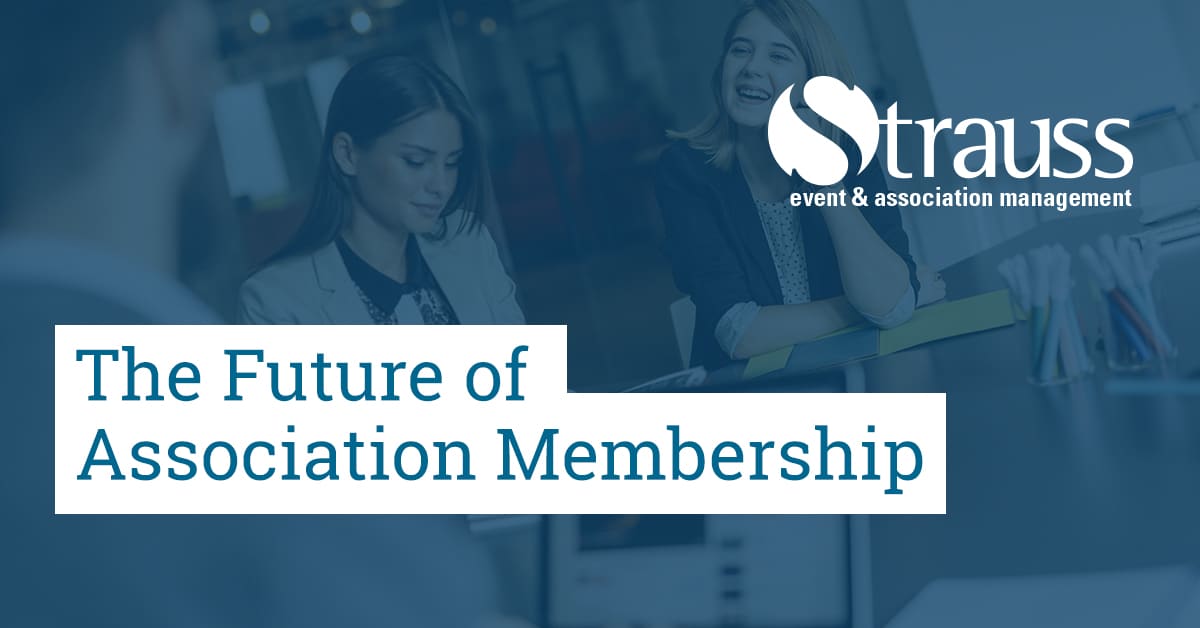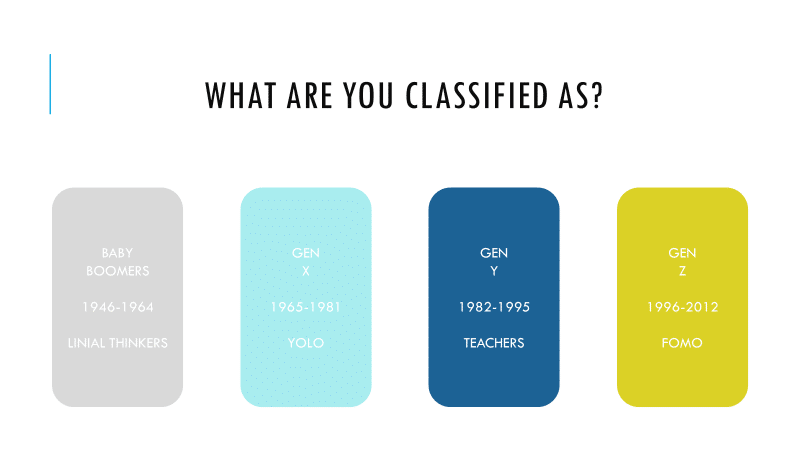One of the challenges that faces associations today is working with different expectations from members depending on their age group. Particularly when associations have membership comprised of people from several different generations, it can be difficult to know how to tailor communication and membership offerings in order to satisfy everyone.
I attended a conference recently that focused on the attributes, expectations and work styles of people from various generations. In this article I will consider the four generations in society today—Baby Boomers, Generation X, Generation Y (or Millennials), and Generation Z—and what they might expect from membership in an association. Knowing this information will help association leaders better plan to meet and even exceed members’ needs.
The Four Generation Types
Baby Boomers, the oldest of the four generations (born between about 1946 and 1964) make up the largest portion of many associations’ membership. They are generally hardworking, loyal, confident and competitive. After this group comes Generation X (born 1965-1981), who lack the sense of authority, are self-reliant and are extremely family-focused. They feel the need to find balance between life and work. Thirdly, there are the Millennials (born about 1982-1995): they are the digital thinkers and usually exude the aura of being needy and having a sense of self-entitlement. The last generation, Generation Z (born 1996-2012), are either too young or are just entering the workforce, so their impact is yet to be seen.
Of course, these are just generalizations about people who were born over a few decades. Individual characteristics can be quite different from those mentioned above. But some qualities that are common in certain generations have proved helpful to organizations working to serve and support them. As the Baby Boomers are now starting to retire, Millennials are confidently stepping in to take their place, but with that will come change. Because of this, associations are now realizing they need to find ways to cater to younger members’ wants and needs. It is not enough anymore to design an association membership format based on the age bracket that association leaders fall into. For more on age demographics related to associations please see my colleague’s blog post on Valuegraphics.
Remaining Relevant to all Ages
In order to remain relevant, associations must understand how membership is being redefined by the first generations of the post-industrial era—that is, Generation X, Y and Z folks—and what associations must to do engage their sustained participation. One way to do this is to take into consideration the different generations’ learning styles when designing, revising, or marketing an education or certification program—and be conscious not to build it just for one age group. Here are a few suggestions to start the engagement process:
[styled_list market=dot]
- Collaborate with members
- Break the routine, remove the structure
- Make it customizable, like a value meal
- Create a clear ROI – Explain where your dues are going (ie: networking, education)
- Create a mentorship program
- Build the association around a cause
Moving Your Association Forward
Once you have mastered one or all of the above engagement processes, look at strategies that would help to move the association forward. Empower staff to have more independence to listen to what the members are saying and have the courage to say “No”. Next figure out which strategies would help your association tell its story. You could align some “giving back” programs to your industry or shift the communication to what members want to know rather than the generic information that tends to go out to all members. Make sure you are making all education and networking events something that everyone will want to attend.
Association members value continuing education and certification because they validate and build their knowledge and skills and give them professional recognition. Members have different ways of thinking and appreciate different forms of recognition. To generalize, Millennials want constant feedback, but Boomers do not, while Generation X is more self-motivated than their peers. Baby Boomers might expect more formal rewards and recognition, while Gen X’ers and Millennials might want it to be less formal. Millennials use social media extensively to share their achievements, so sending a digital certificate that they can easily share and incorporate into their online portfolio or profile would be appreciated more than a mailed copy. For more information on managing change please read Managing Change within an Association.
Strategies to Help Your Association Tell Its Story
Learning what members need to exceed, what young professionals need to succeed, and what you could provide that would prove immediately useful and exclusive to members are great ways to tell your association’s story. Some things to consider are:
[styled_list market=dot]
- Face-to-face interaction
- Accountability – Return calls/emails within 24 hours
- Define the leadership rolls
- Provide opportunities to engage
- Networking – be creative with ideas such as bonfires, billiards, bowling, scavenger hunts
- Have some business development support available – mentorship and engagement
- Update your website often, make it part of the Google or Netflix idea, have titles show up based on what visitors are interested in
- Create personalized interactions
Bridging Generation Gaps
Ultimately what it comes down to is, can your association remain relevant and connect with different age groups in different ways? In order to build your membership and bridge the generation gap, try following these steps:
[styled_list market=dot]
- Understand what your members want and need
- Develop member benefits that solve the problems of your target audience
- Assess the costs to provide those benefits and get rid of anything that doesn’t provide a benefit
- Create a membership building plan
- Test the benefits and revenue modes with members and no members, make the necessary adjustments
With a little more understanding and slight strategic tweaks, bridging the gaps and obtaining your newest recruits to your association will be as easy as sending your next tweet!


